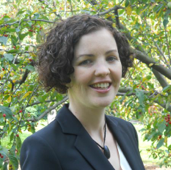Evaluating the impacts of the Dar es Salaam Bus Rapid Transit (BRT) system
Across the developing world, tens of millions of people live in large cities in which the cost of commuting and transport in general is extremely high. Existing evidence suggests that these costs may reduce the ability of poor households to access jobs and important amenities. Cities across the developing world are making significant investments in urban transport infrastructure as a means to increase urban mobility; reduce job search costs; improve worker and firm productivity, employment and growth; improve air quality; increase road safety; and improve individual welfare through increasing commuter income, health and leisure consumption. Such large-scale projects include a light rail system in Addis Ababa; upgrading of buses in Kigali; and bus rapid transit systems in cities including Lahore, Nairobi and Dar Es Salaam. Despite the rapid proliferation of these projects, the empirical evidence on the impacts of urban transportation infrastructure in developing countries remains limited.
In Tanzania, the Dar Rapid Transit Agency was established to implement the Dar es Salaam Bus Rapid Transit (BRT) system. The project consists of six phases. Phase 1 consists of 20.9km of bus ways, 5 terminals, 2 depots and 27 bus stations located at the central median. The corridor traverses from the high income central business district towards middle- and low-income residential areas in the West. We propose to evaluate the economic impacts of phase 1 of the BRT, as well as laying the groundwork to understand complementary interventions and to allow for rigorous evaluation of the later phases.
Identification will come from a spatial triple differences (difference-in-difference-in-differences) methodology based on the fact that all planned phases of the BRT system centre on arterial rays emanating from the central business district. We will combine estimates from this empirical strategy with a general equilibrium model of economic activity throughout Dar es Salaam. We will also implement two randomized interventions to investigate potential policy options for increasing the extent to which the poorest may benefit from the BRT, and which will also be used to identify key elasticities in the model.
The first of these interventions will subsidise access to the BRT for certain individuals, and the second will be a spatially conditional cash transfer programme which aims to understand the costs of displacement resulting from public infrastructure projects.




